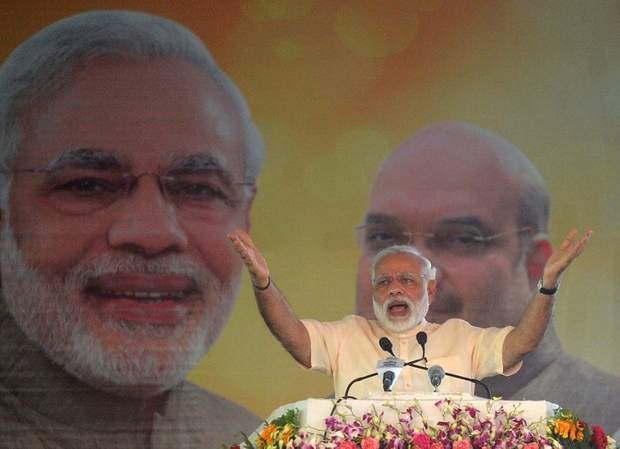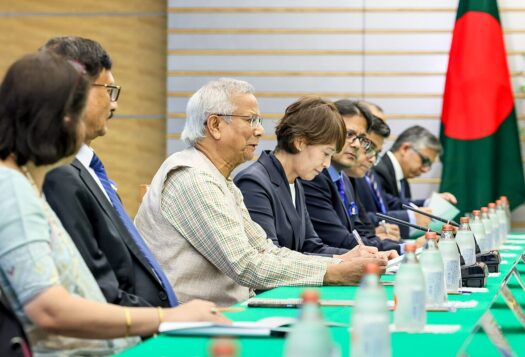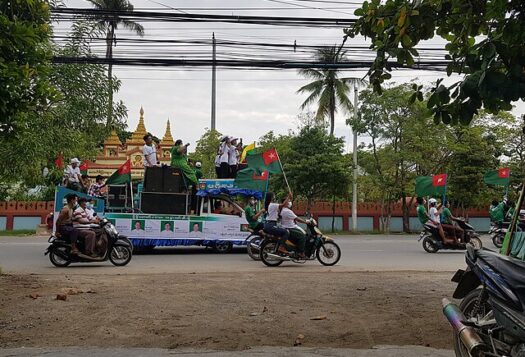
The Modi government just celebrated its second anniversary, with accomplishments such as the Jan Dhan Yojana (financial inclusion scheme), Aadhar Card Yojana (financial independence scheme), and initiatives such as Digital India and Smart Cities to its credit. However, whether the ache din (good days) promised by the Modi government have returned is a question that remains to be answered. Does the Modi magic still exist after the devastating electoral failure in Delhi and Bihar? Modi has more or less lived up to the “minimum government, maximum governance” maxim, by opting for a condensed cabinet and using social media to redress citizen grievances. However, the Bharatiya Janata Party(BJP)’s Hindutva brand of politics overshadows the government’s achievements. As the government enters its third year in power, there remain various challenges to overcome.
Reforming Past Initiatives?
Many schemes introduced by the BJP-led government are revised versions of those the Indian National Congress formulated but failed to implement. Those schemes have now been attractively repackaged by the BJP in an attempt to garner support from the public.
Jan Dhan Yojana (JDY), Modi’s massive financial inclusion scheme, was introduced in August 2014. Under this initiative, 220.1 million bank accounts have been opened so far. This initiative was intended to help the BJP establish a stronghold among the rural population. The JDY is linked with the Aadhar Card Yojana, a program that ties subsidies, pensions, and scholarships to biometric citizen ID cards and transfers funds directly from the government to the bank account holders, eliminating the role of middlemen and reducing the potential for corruption as well.
Another prominent initiative has been Swachh Bharat Abhiyan (SBA), launched in October 2014, with the goal of improving urban and rural sanitation. SBA replaced the Nirmal Bharat Abhiyan, a similar initiative by the Congress. The scheme is aimed at the construction of toilets in schools and villages, with a target of 111 million toilets in rural India by 2019, of which 18.7 million have already been built, according to official sources.
However, every scheme introduced has faced a number of challenges. For instance, JDY opens bank accounts for the rural poor, but it fails to address dormancy of bank accounts as many are abandoned after they are opened. Under the SBA, toilets have been constructed, but not enough awareness has been spread with regard to their use. As of November 2015, only 46 percent of the toilets built in rural India were being used. Thus, the benefits of these schemes need to be measured thoroughly.
In the field of foreign policy, Modi has done very well and has forged many new bilateral relationships. Some noteworthy initiatives are: inviting leaders of the SAARC member countries to his swearing-in ceremony, the India-Africa Forum Summit, and the landmark Land Boundary Agreement with Bangladesh. Modi’s visit to 28 countries in 2015 was seen as an attempt to attract potential investors to shape his Make in India and Digital India initiatives. However, the party faces several challenges in the form of terrorism, and border issues with Pakistan, Nepal, China, and the Maldives.
Challenges
The initiatives discussed above were taken to increase the BJP’s popularity and expand its voter base. However, the party as a whole has suffered major political setbacks, the most prominent being the Delhi and Bihar debacles. Though in the recent Assam elections, the party got 29.5 percent of the vote share with 60 seats. The victory might help BJP in getting Rajya Sabha seats, however that will not happen before 2019. Thus, it will not help in passing important bills in the near future.
Furthermore, the Jawaharlal Nehru University row continues to bring into question the party’s approach towards education. The BJP’s use of sedition charges has been seen as a tool to curtail student voices that differ ideologically from the party. Such incidents have brought together the left-of-center parties, providing a strong opposition to the BJP.
Additionally, there have been numerous instances where the BJP has worked against the principles of cooperative federalism, not only in Uttarakhand but also in Arunachal Pradesh.
Moreover, Amnesty International’s recently published report, shows that caste-based and religion-based discrimination continue to prevail. The report mentions incidents of caste-based violence against Dalits and Adivasis, multiple sexual violence cases against Dalit women and girls, and numerous incidents of communal killings, including four mob-based deaths of Muslim men.
The BJP’s journey in the last two years has been a roller-coaster ride. Although it has had some successes, it is imperative for the party to rethink its political approach to ensure longevity. The government must address the key issues mentioned above, and must coordinate among the states to ensure its electability in the upcoming Uttar Pradesh and Punjab elections, as well as in the 2019 Lok Sabha elections.
***
Image: Sanjay Kanojia-AFP, Getty


